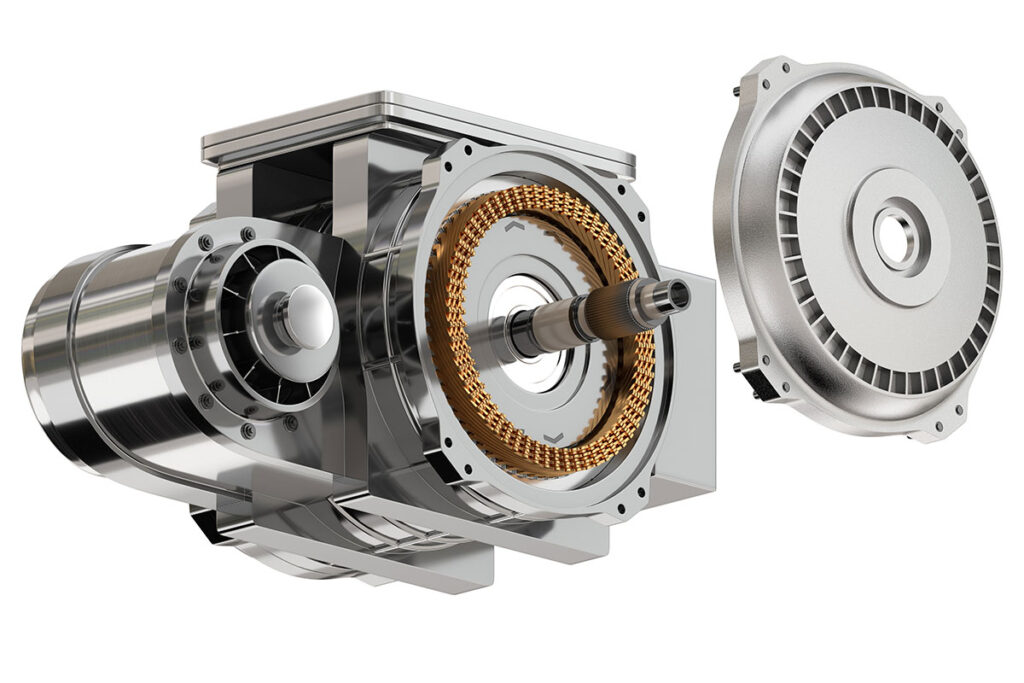The History of Hairpin Technology
The global automotive industry is completely reinventing itself to make electric vehicles (EV’s) the mainstream mobility solution. But it is not just automobiles. We see news every day about the development of electric air taxis, airliners and long-haul trucks. It took over 100 years, but electric vehicles are finally poised to leave the fringe and become the mainstream.
EVs lost the battle to internal combustion in the early 20th century. We think of EVs as new, but five different first ladies of the USA drove around Washington DC in an electric vehicle back in the early 20th century. History, however, had a different course. Imagine, though, how different our world might be today if close friends Henry Ford & Thomas Edison had latched onto EVs back then.
To really succeed in the 21st century, EVs need to achieve the performance, efficiency, and affordability that they lacked 100 years ago. Thanks to the massive development push in recent decades, tremendous strides have been made.
Consider the very things that make the car move – electric motors. It has been nearly 200 years since English scientist William Sturgeon built upon the work of many predecessors and created the first commutator DC electric motor that could turn machinery. Electric motors have advanced continually since then and are everywhere today. They do not get the same recognition as cars, airplanes, or computers for changing the world, but they certainly have. For much of that history, electric motors relied on a magnetic field created by electricity flowing through windings, the copper wires wound around the stator.
The Rise of Hairpin Technology
A more recent innovation is a hairpin motor, which uses many coated copper wires formed into a U shape for the stator windings. The shape of these wires resembles a hairpin, which is where they got their name. Using hairpins for windings offers many advantages for EV motors, including higher power density, improved durability, and more efficient manufacturing. Due to the many advantages, motors with hairpin stators are the most common design used for EVs. The manufacturing of hairpin motors is increasing with the growing market for EVs.
Hairpin Manufacturing Challenges and Solutions
The challenges of efficient and productive manufacturing of hairpin motors are many, but since Accurex is in the business of dimensional inspection, we will focus on that. Stator hairpins have many distinct 3D shapes so that they can be stacked very tightly and achieve the motor’s desired performance. Therefore, manufacturers need to ensure that the manufacturing processes for the hairpins are producing the correct shape. This is particularly challenging given their complex shapes and the fact that copper is a soft and easily deformed material.
I mention processes (plural) because production of hairpins often involves multiple steps. These usually involve straightening the copper wire, cutting it to length, forming the initial U shape, pressing the 3D crown shape, and shaping the ends for insertion to the stator. This video from Felsomat provides a pleasant view of the process.
Dimensional inspection of finished hairpins is especially important. It is necessary for initial process setup so process engineers can fine-tune the various steps to produce the correct end product. Inspection is also important for ongoing monitoring of hairpin manufacturing. The Felsomat video also showed the methods manufacturers originally used for inspecting the geometry of stator hairpins: often a combination of CMM (Coordinate Measuring Machine) or optical comparator and 3D scanner with inspection performed in a quality lab. These methods were suitable for low volume but are too slow and labor-intensive for support of production with many hairpin variants and high volume. Manufacturers need a fast, reliable method to inspect hairpins on the shop floor.
The 3D Hairpin Inspect System
To meet this need, the 3D Hairpin Inspect system was created. It is an optical 3D gauge that provides accurate, easy, fast, quantifiable 3D inspection of hairpins on the shop floor. 3D Hairpin Inspect is derived from the well-proven TubeInspect optical gauge for formed tubular products.

3D Hairpin Inspect utilizes the principles of photogrammetry and a special version of the BendingStudio software to perform full dimensional inspection of a hairpin in about 10 seconds.


3D Hairpin Inspect can inspect hairpins and I-pins and at various stages, from straight wire to final 3D shape. Dimensional inspection can include centerline profile as well is outside dimensions of the legs, critical angles, etc. With 3D Hairpin Inspect, manufacturers of EV motors are equipped to ensure quality at the elevated level of production required to meet demand for the growing EV market.

Do you have a need for hairpin dimensional inspection? Learn more about our Hairpin Inspection solution.

